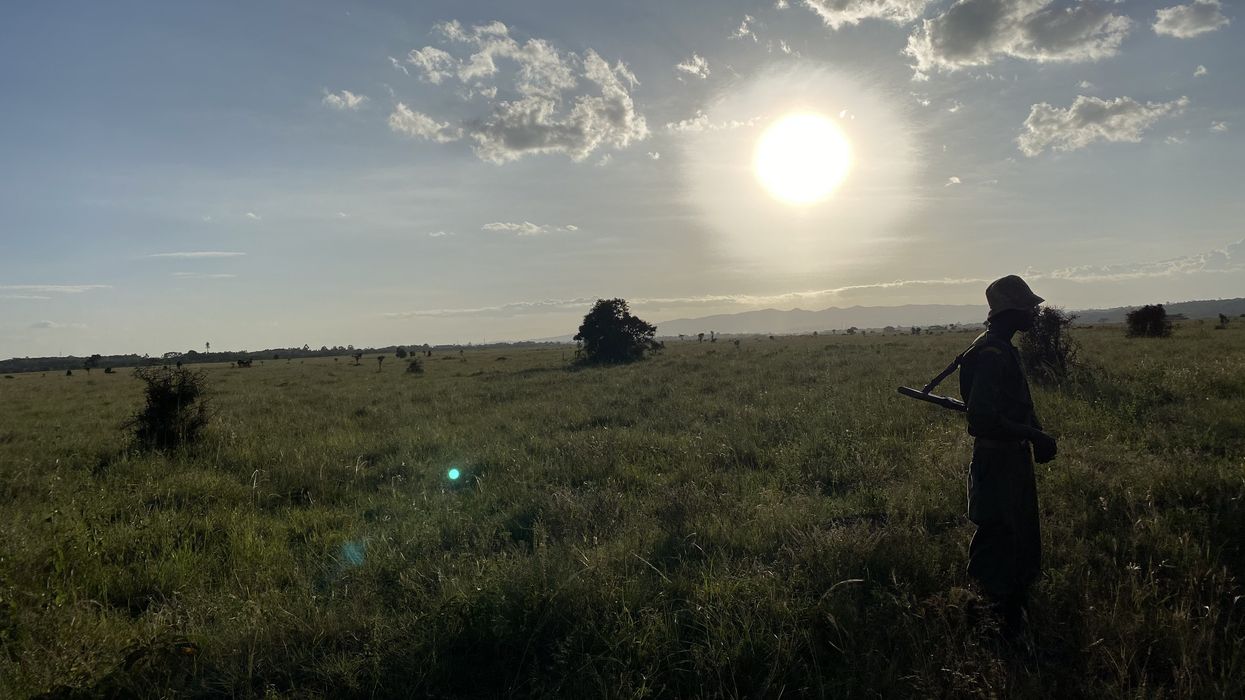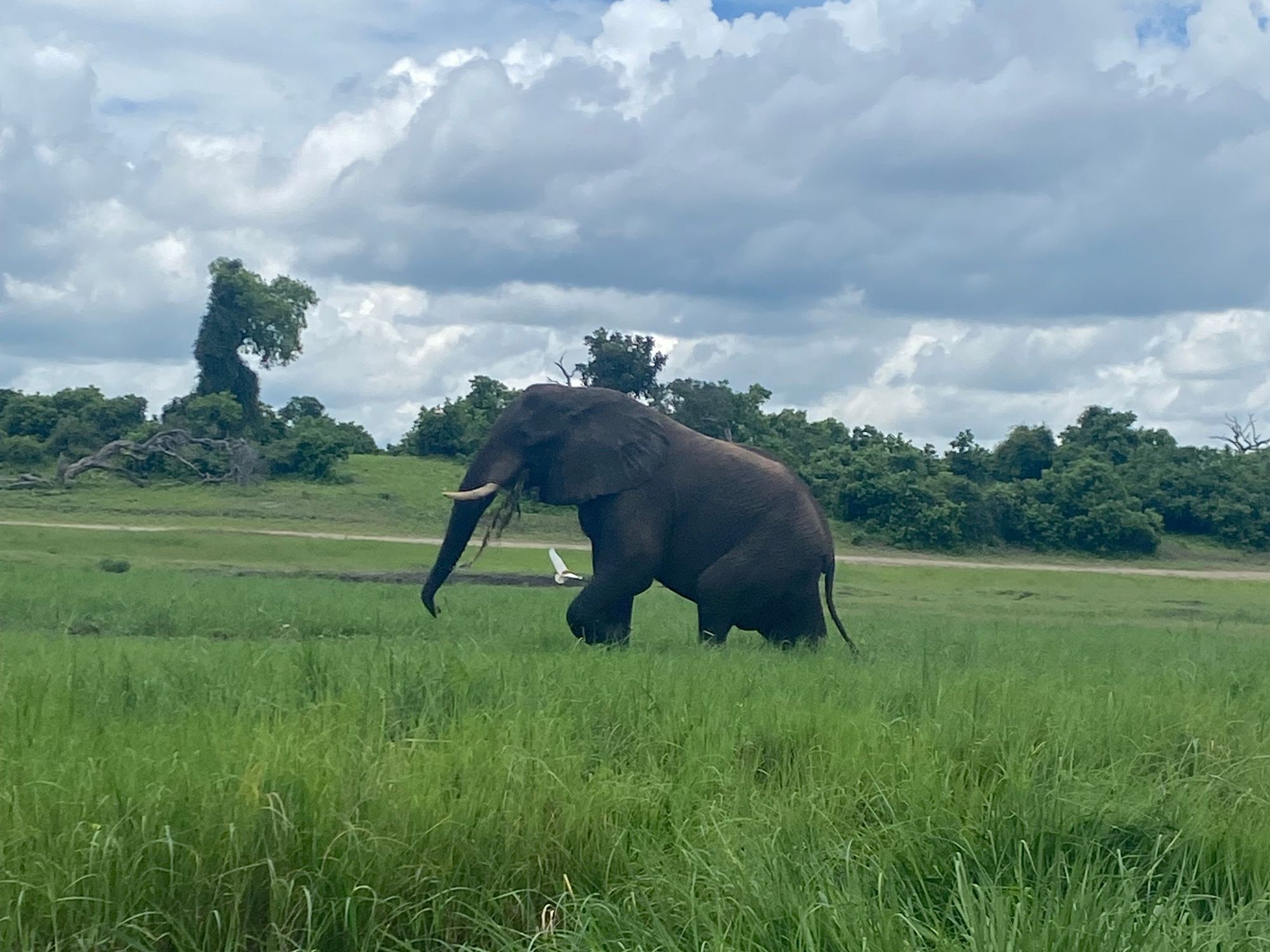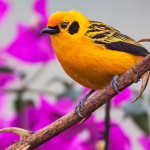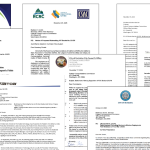
About 7,400 miles away from my partners in Namibia, I sit at my desk, pen in hand and mouth agape.
This isn’t the first time my colleagues have left me speechless. Through testimonies of children seeking revenge for their murdered fathers, families losing generations due to heartbreak, communities fractured, prospects of marriage dissolved and homes forever impacted, I thought I had heard it all. But during this particular conversation with Earle Sinvula Mudabeti and Sylvester Kabajani, board members of Namibian Lives Matter, I felt my heart settle in my stomach, as I grappled with the raw realities of militarized conservation. I kept questioning at what point did killing become a viable conservation strategy and to what extent conservationists are willing to keep marginalizing and exterminating Black people for biodiversity.
To read a version of this story in Spanish click here. Haz clic aquí para leer este reportaje en español.
Militarized conservation, which is the use of military-grade weapons, peoples, or enforcement tactics for biodiversity protection, was something I stumbled upon at the beginning of my graduate studies. Amidst the news articles, press releases and YouTube videos about wildlife non-governmental organizations (NGOs) funding militaries to save wildlife, I also found shattered families and communities – mostly Black and Indigenous – that conservation-induced violence had altered forever.
Despite the good intentions behind this conservation strategy, at its core, conservation-motivated violence is a dehumanizing way to look at poachers. I believe that conservation rooted in care, for both people and wildlife, will be more successful than conservation predicated on violence.
The case of the Chobe National Park
As a multiracial Black woman, I am used to being perceived as an anomaly in the conservation field. Throughout my education, I have often been part of a small handful, or the sole person, in classrooms or conferences. Hearing “are you sure you’re supposed to be here?” and seeing widened eyes when I affirmed my belonging. This outcast feeling wasn’t surprising, nor new to me.
What did surprise me was that being against the killing of innocent people for conservation was considered radical. I thought I was just being human.
Militarized conservation consists of hyper-vigilant security strategies to protect biodiversity, often at the expense of local communities. It could mean the use of drones, such as in Nepal’s Chitwan National Park; increased policing in national parks or protected areas such as in Cambodia; or arming environmental agents with specialized weapons as is the case in Haiti.
Conservation-motivated violence is a dehumanizing way to look at poachers.
I started questioning this approach after learning about the deeply rooted contestation in southern Africa between the nations of Botswana and Namibia, where bullets and elephants rumbled the communities around Chobe National Park.
This park boasts the largest concentration of elephants in Botswana and shares a border with Namibia and Zimbabwe. At any time, there can be more than 50,000 elephants moving in and out of the park, representing a huge opportunity for the global ivory trafficking industry. In response to this threat to Chobe’s elephants, Botswana informally implemented a “shoot-to-kill” policy in 2013, which authorized the Botswana Defense Force to kill suspected poachers.
Clicking through stories on women and urban bushmeat trafficking, I came across an article detailing the death of a mother following the murders of her three sons, who were suspected of poaching in Chobe National Park. The Botswana Defense Force killed the three Namibian brothers – Tommy, Wamunyima and Martin Nchindo – and their Zambian cousin Sinvula Munyeme, while they were fishing on the Chobe River in 2020. Their murders lacked substantive evidence of them poaching.

More than 15,000 Namibians mobilized and protested the Nchindo murders in 2020. These protests largely contributed to the creation of the Namibian Lives Matter movement, which, similar to the United States’ Black Lives Matter movement, reflects an active resistance to state violence against racially marginalized peoples.
The Nchindo brothers are not the only Namibian victims of the shoot-to-kill policy. To date, Namibian Lives Matter attests that nearly 40 Namibians have been killed by the Botswana Defense Force since the 1990s, including a nine-year-old boy. Conservation violence reaches the families and communities of those killed or incarcerated. Indeed, losing the primary household provider makes families and communities more susceptible to poverty and food insecurity.
Despite these violent conservation policies, poaching persists. A 2022 Kavango-Zambezi Transfrontier Conservation Area (KaZa TFCA) Elephant Survey found that in Botswana, in comparison to the 2018 survey, elephant populations were stable, the elephant numbers had decreased by 25% in areas open to hunting and had increased by 28% in areas where hunting was banned. These findings suggest that elephants are moving into areas that they consider safer, which poses a bigger chance of retaliatory killings and human-wildlife conflict for communities.
More than 15,000 Namibians mobilized and protested the Nchindo murders in 2020. These protests largely contributed to the creation of the Namibian Lives Matter movement.
Instead of protecting the elephants, these efforts to curb poaching through executing and incarcerating poachers have more often resulted in further marginalizing the families left behind, as well as deterring local communities from participating in conservation efforts. In fact, as demonstrated by researchers in 2013, systemic barriers, such as poverty or lack of political voice, can prevent local communities from challenging unpopular conservation policies. “Militarization is the short-term solution,” wrote professor Rosaleen Duffy. And not only that: it can make us think we’re addressing the problem when we’re just perpetuating injustice under the guise of conservation.
An uncomfortable viewpoint
Being simultaneously anti-poaching and also anti-war has put me in a strange position. I am opposed to all forms of militarization, which means that I believe that people don’t have to die for wildlife to live.
This stance has made me the target of criticism.
Those who are in favor of militarized conservation efforts – from members of the general public to benefactors and donors, to non-governmental organizations, to national governments and even to other conservationists – push for militarized efforts because they believe it is the only possible response to the increase in poaching. Documentaries like “Virunga: Conservation is War” or “Akashinga: The Brave Ones,” have only glamorized this approach, helping its expansion globally.
Being simultaneously anti-poaching and also anti-war has put me in a strange position. I am opposed to all forms of militarization, which means that I believe that people don’t have to die for wildlife to live.
But others, like me, advocate for the recognition of poachers as people, with legitimate reasons as to why they chose to hunt illegally. Those who are poaching in the parks are often not the high profile wildlife traffickers or ivory kingpins, but are rather people who are hunting to either procure food for themselves and their families, or supplement their income. Researchers have found that the poaching rates of elephants is linked to local poverty levels, national corruption and ivory prices. Poverty, in essence, drives elephant poaching, with fewer elephants being poached in areas where communities have greater economic stability and health.
Further, we believe that any conservation effort that requires violence to function only works to further marginalize communities that live alongside wildlife. It inadvertently uplifts the ideals of white supremacy because whiteness can exist and belong in wild spaces, while communities of color are classified as threats to conservation efforts.
Infamously, while India’s Kaziranga National Park holds over two-thirds of the world’s Indian one-horned rhino population, Kaziranga achieved this success through deadly security measures. “The instruction is whenever you see the poachers or hunters, we should start our guns and hunt them,” a Kaziranga park guard shared with journalist Justin Rowlatt. In the case of the Nchindo brothers, the inquest revealed that a total of 32 bullets were fired at the men, who were found without weapons or elephant tusks. I read this as a testament to how militarized conservation disregards the very humanity of poachers.
Moving past dehumanizing conservation strategies

Conservation strategies that don’t care about local communities can increase poaching activities and an aversion to conservation entirely. I believe wildlife policies that are responsive to local people’s needs have a better chance to be sustainable, long-lasting and just.
As a counter to violent conservation policies, Namibian Lives Matter and I, in partnership with the Cornell Institute for African Development, are establishing communal fisheries along the Zambezi River. Fish are life for the Zambezi people, and violent conservation policies infringe on their right to life by prohibiting their access to fish.
Our project, through cultivating relationships with local tourist lodges and restaurants, provides an economic opportunity for fishermen and maintains traditional fishing practices. These efforts reflect a need for conservation to take a care-oriented approach that does not sacrifice one cause for another.
We can cultivate conservation futures that benefit communities and address social inequality and environmental degradation. With the impending Biodiversity COP16, it is crucial for conversations to include communities in conservation planning, implementation and management to reflect their needs. The pursuit of care in conservation isn’t just a new strategy – it’s a way of thinking and doing that truly values and chooses life.
This essay was produced through the Agents of Change in Environmental Justice fellowship, a partnership between Environmental Health News and Columbia University’s Mailman School of Public Health. Agents of Change empowers emerging leaders from historically excluded backgrounds in science and academia to reimagine solutions for a just and healthy planet.





